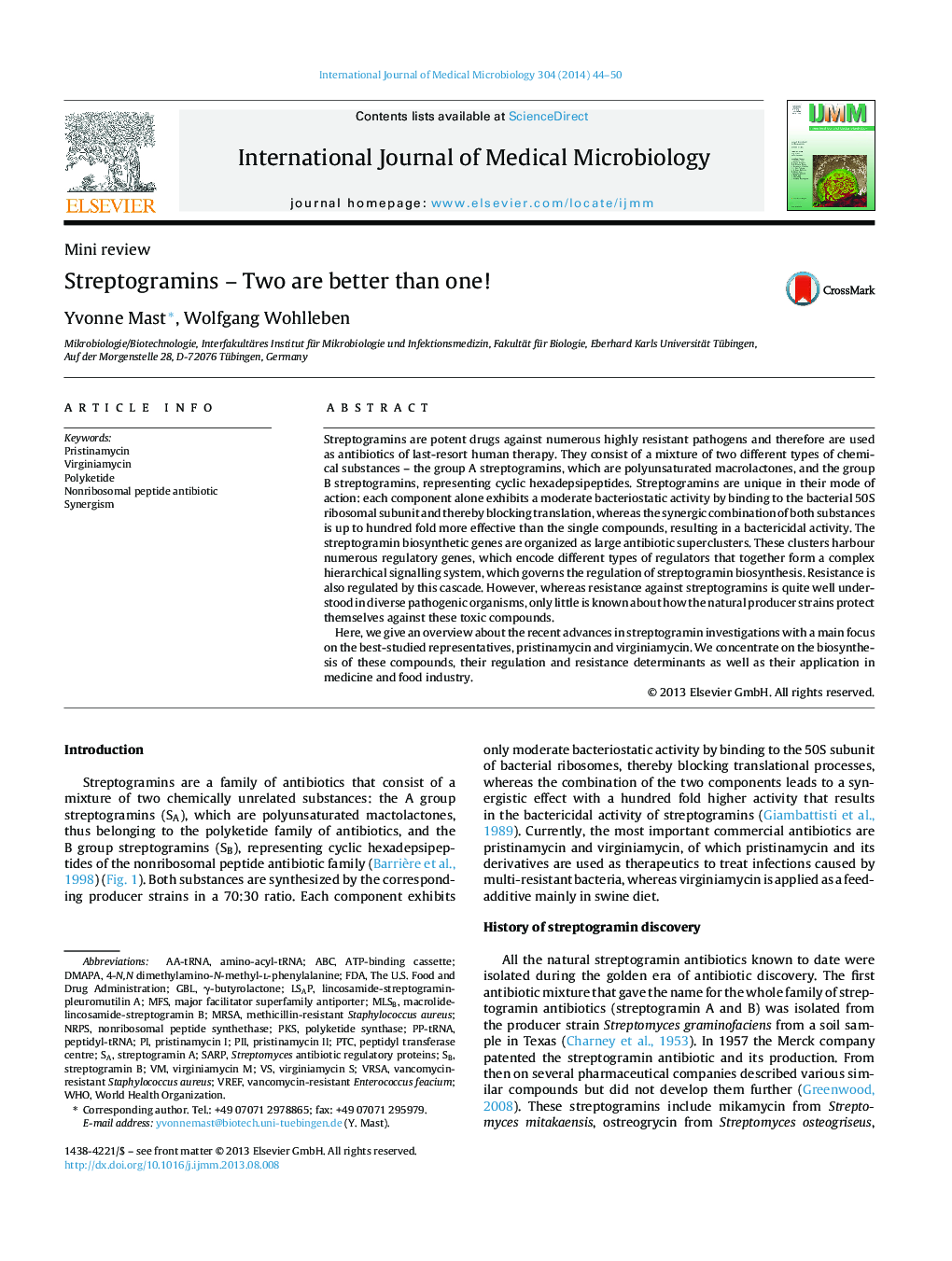| کد مقاله | کد نشریه | سال انتشار | مقاله انگلیسی | نسخه تمام متن |
|---|---|---|---|---|
| 2054379 | 1543697 | 2014 | 7 صفحه PDF | دانلود رایگان |
Streptogramins are potent drugs against numerous highly resistant pathogens and therefore are used as antibiotics of last-resort human therapy. They consist of a mixture of two different types of chemical substances – the group A streptogramins, which are polyunsaturated macrolactones, and the group B streptogramins, representing cyclic hexadepsipeptides. Streptogramins are unique in their mode of action: each component alone exhibits a moderate bacteriostatic activity by binding to the bacterial 50S ribosomal subunit and thereby blocking translation, whereas the synergic combination of both substances is up to hundred fold more effective than the single compounds, resulting in a bactericidal activity. The streptogramin biosynthetic genes are organized as large antibiotic superclusters. These clusters harbour numerous regulatory genes, which encode different types of regulators that together form a complex hierarchical signalling system, which governs the regulation of streptogramin biosynthesis. Resistance is also regulated by this cascade. However, whereas resistance against streptogramins is quite well understood in diverse pathogenic organisms, only little is known about how the natural producer strains protect themselves against these toxic compounds.Here, we give an overview about the recent advances in streptogramin investigations with a main focus on the best-studied representatives, pristinamycin and virginiamycin. We concentrate on the biosynthesis of these compounds, their regulation and resistance determinants as well as their application in medicine and food industry.
Journal: International Journal of Medical Microbiology - Volume 304, Issue 1, January 2014, Pages 44–50
